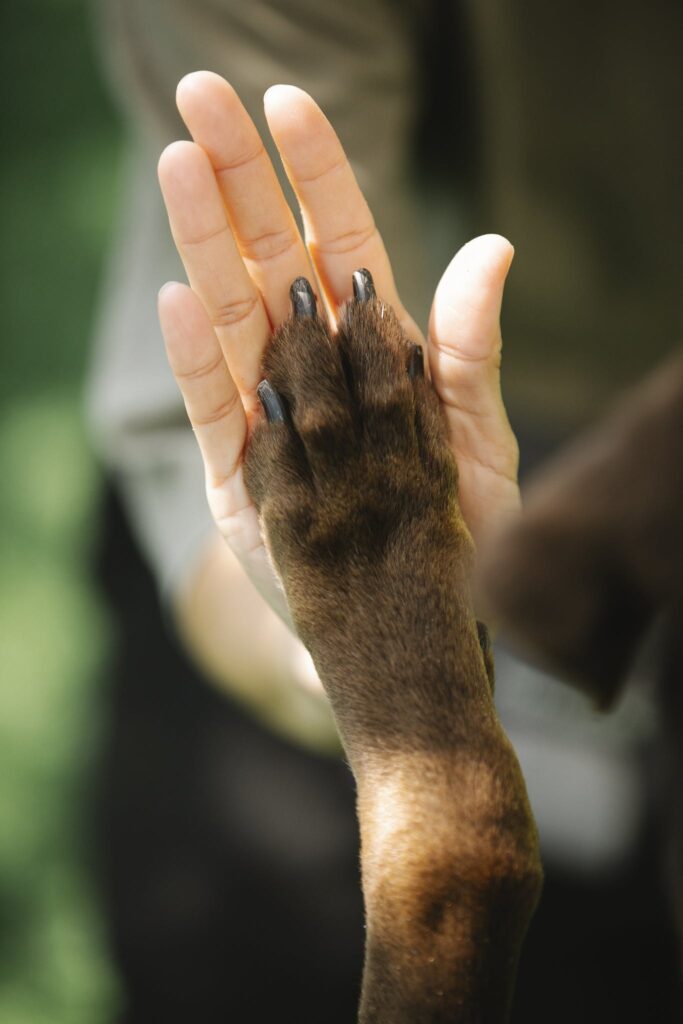A Journey of Emotion and Connection

The Complete Guide to Raising the Perfect Pet with Love: A Journey of Emotion and Connection
Introduction
Welcoming a pet into your life is more than just a decision; it’s a heartfelt commitment. In this guide, we’ll dive deep into the emotional and poetic journey of raising the perfect pet with love.
Finding Your Furry Soulmate
Researching Breeds: More Than Just Looks
The Shelter Experience: A Tale of Rescued Hearts
Bringing Your Fur Baby Home
The First Encounter: Love at First Sight
Creating a Pet-Friendly Space: Home is Where the Paw Prints Are
Nurturing with Love
Playtime Chronicles: Bonds Beyond Words
The Art of Communication: Understanding Pet Language
Facing Challenges Together
Veterinary Adventures: Navigating Health Hurdles
Behavioral Quirks: Embracing Imperfections
Adventures and Explorations
Outdoor Escapades: Creating Lasting Memories
Traveling with Pets: A Journey of Discovery
The Poetic Connection
Unspoken Bonds: The Language of Love
Midnight Musings: Sharing Moments in Silence
A Personal Touch
Tales from Pet Parents: Real-Life Anecdotes
Lessons Learned: Embracing the Unpredictable
Embracing the Unpredictable: A Bold Approach to Pet Parenting
Conclusion
In this journey of raising the perfect pet with love, imperfections become the beauty of the bond. It’s not just about having a pet; it’s about creating a life filled with shared experiences, laughter, and love.
How do I choose the right pet for my lifestyle?
Choosing the right pet for your lifestyle is a crucial decision that involves considering various factors. Here’s a guide to help you make the best choice:
- Evaluate Your Lifestyle:
- Assess your daily routine, work hours, and social activities. Different pets have varying needs for attention and care.
- Living Space Matters:
- Consider the size of your living space. Some pets, like dogs, may require more room to roam, while others, like cats, are more adaptable to smaller spaces.
- Allergies and Sensitivities:
- Be aware of any allergies or sensitivities you or your family members may have. Some pets may trigger allergies, so it’s essential to choose a hypoallergenic breed if needed.
- Energy Levels:
- Match the pet’s energy levels with your own. If you enjoy outdoor activities and exercise, a more active pet like a dog might be a good fit.
- Long-Term Commitment:
- Consider the lifespan of the pet you’re interested in. Some pets, like turtles, can have a longer lifespan than others. Ensure you’re ready for a commitment that extends for years.
- Maintenance and Grooming:
- Different pets have varied grooming needs. Factor in the time and effort you can dedicate to grooming, whether it’s brushing fur, cleaning cages, or trimming nails.
- Budget Considerations:
- Assess the financial aspect of pet ownership. Consider costs such as food, grooming supplies, veterinary care, and other potential expenses.
- Pet Interaction:
- Evaluate how much time you can spend interacting with your pet. Some animals, like birds, require social interaction, while others, like reptiles, may be more independent.
- Research Breed Characteristics:
- If you have a specific breed in mind, research its characteristics thoroughly. Some breeds are known for being more suitable for families, while others may be better for single individuals.
- Visit Shelters and Rescues:
- Consider adopting from shelters or rescues. Many pets are in need of loving homes, and this can be a rewarding option.
By carefully considering these factors, you can make an informed decision and find a pet that aligns with your lifestyle, bringing joy and companionship into your home.

What if my pet exhibits challenging behavior?
Dealing with challenging behavior in pets can be a test of patience, but with the right approach, you can address and manage these issues effectively. Here are some steps to take if your pet exhibits challenging behavior:
- Stay Calm and Patient:
- It’s crucial to remain calm when faced with challenging behavior. Yelling or reacting strongly may escalate the situation. Patience is key.
- Identify the Root Cause:
- Understand why your pet is exhibiting the behavior. It could be due to fear, anxiety, boredom, or even a health issue. Identifying the root cause helps in finding an appropriate solution.
- Consult with a Veterinarian:
- If the behavior is sudden or unusual, consult with a veterinarian to rule out any underlying health issues. Pain or discomfort can contribute to changes in behavior.
- Positive Reinforcement:
- Reinforce positive behavior with treats, praise, or toys. This encourages your pet to associate positive actions with rewards.
- Consistent Training:
- Consistency is key in training. Set clear boundaries and rules for your pet, and ensure that everyone in the household follows them consistently.
- Redirect Negative Behavior:
- Instead of punishing negative behavior, redirect it to a more appropriate activity. For example, if your pet is scratching furniture, provide a scratching post as an alternative.
- Enrich the Environment:
- Pets can display challenging behavior when they’re bored. Provide mental and physical stimulation through toys, puzzles, and interactive activities.
- Seek Professional Help:
- If the behavior persists or escalates, consider seeking the help of a professional dog trainer or animal behaviorist. They can provide tailored guidance based on your pet’s specific needs.
- Avoid Physical Punishment:
- Physical punishment can lead to fear and aggression. Instead, focus on positive reinforcement to encourage desired behavior.
- Create a Safe Space:
- Provide a safe and comfortable space where your pet can retreat if feeling overwhelmed. This can be a designated area with their bed and favorite toys.
Remember, addressing challenging behavior takes time and consistent effort. Be understanding, reinforce positive actions, and, if needed, seek guidance from professionals to create a harmonious relationship with your furry friend.

Is it possible to raise a perfect pet?
The concept of a “perfect” pet is subjective and varies from person to person. While perfection may be an unrealistic standard, creating a strong and loving bond with your pet is entirely achievable. Here’s a closer look at the idea of raising a perfect pet:
- Understanding Imperfections:
- Like humans, pets are not flawless. They have unique personalities, quirks, and behaviors that contribute to their individuality. Embracing these imperfections is part of the joy of pet ownership.
- Building a Strong Connection:
- Instead of aiming for perfection, focus on building a strong and meaningful connection with your pet. A deep bond is formed through shared experiences, love, and mutual understanding.
- Investing Time and Effort:
- Raising a pet requires time, effort, and dedication. By investing in their well-being, training, and socialization, you contribute to a healthy and happy relationship.
- Tailoring Expectations:
- Adjust your expectations to align with the unique qualities of your pet. Recognize that each animal has its own set of characteristics, and perfection should be viewed in the context of their individual nature.
- Learning Together:
- Pet ownership is a continuous learning process for both you and your furry companion. Adaptability and a willingness to learn and grow together contribute to a fulfilling journey.
- Unconditional Love:
- The essence of a perfect pet lies in the unconditional love they provide. Pets don’t judge; they offer companionship, loyalty, and affection, creating a perfect connection based on mutual love.
- Overcoming Challenges:
- Challenges are a natural part of pet ownership. Whether it’s behavioral issues, health concerns, or adapting to changes, navigating challenges together strengthens the bond and contributes to a unique perfection.
- Enjoying the Journey:
- Instead of fixating on an idealized notion of perfection, savor the journey with your pet. The laughter, joy, and shared moments create a perfect tapestry of experiences.
- Meeting Basic Needs:
- Ensure that you meet your pet’s basic needs, including proper nutrition, veterinary care, and a safe environment. Meeting these needs contributes to their overall well-being.
- Celebrating Uniqueness:
- Embrace and celebrate the uniqueness of your pet. Whether they’re playful, reserved, or quirky, their individuality adds charm and character to your shared life.
In essence, the perfect pet is not about flawlessness but about the bond and connection you cultivate over time. By embracing the imperfections and celebrating the unique qualities of your pet, you can create a perfect partnership filled with love and companionship.

How can I make my home more pet-friendly?
Creating a pet-friendly home involves thoughtful consideration of your furry friend’s needs and safety. Here’s a guide on making your home more welcoming and comfortable for your pet:
- Designate Pet Zones:
- Create specific areas in your home where your pet can eat, sleep, and play. This helps establish boundaries and provides a sense of security.
- Secure Hazardous Items:
- Identify and secure potentially harmful items such as electrical cords, toxic plants, and small objects that could be swallowed. Keep these out of your pet’s reach.
- Provide Comfortable Bedding:
- Offer a comfortable and designated sleeping area for your pet. This can be a cozy bed or a soft blanket in a quiet corner.
- Invest in Chew Toys:
- Dogs and cats may have a natural instinct to chew. Provide appropriate chew toys to prevent them from gnawing on furniture or belongings.
- Pet-Proof Trash Bins:
- Use pet-proof trash bins to prevent your furry friend from rummaging through garbage. This helps avoid potential hazards and messes.
- Secure Windows and Balconies:
- Ensure windows and balconies are secure to prevent accidental falls. Cats, in particular, may be curious and prone to exploring high places.
- Create a Scratching Post Area:
- If you have a cat, offer a designated scratching post to fulfill their natural urge to scratch. Place it in an accessible and appealing location.
- Regular Grooming Station:
- Establish a regular grooming station equipped with brushes, combs, and pet-friendly shampoos. This makes grooming sessions more comfortable for your pet.
- Pet-Friendly Furniture Covers:
- Consider using furniture covers or blankets to protect your upholstery from pet hair and potential accidents.
- Interactive Toys and Enrichment:
- Keep your pet mentally stimulated by providing interactive toys, puzzle feeders, or treat-dispensing gadgets. This helps prevent boredom and promotes mental engagement.
- Secure Fencing for Outdoor Pets:
- If you have outdoor space, ensure that the fencing is secure to prevent your pet from wandering off or encountering potential dangers.
- Maintain a Consistent Routine:
- Stick to a consistent feeding and walking routine. Pets thrive on predictability, and a routine helps them feel secure.
- Pet-Friendly Plants:
- Choose pet-friendly plants to decorate your home. Avoid toxic varieties that could pose a risk if ingested.
- Regular Vet Check-ups:
- Schedule regular veterinary check-ups to ensure your pet’s health and address any concerns proactively.
- Warmth and Comfort:
- Provide warm and comfortable spots for your pet to relax, especially in colder months. Cozy blankets or heated pet beds can be a delightful addition.
By incorporating these pet-friendly adjustments, you create a safe, comfortable, and enjoyable environment for your furry companion, fostering a happy and harmonious home for both of you.

What role does love play in pet parenting?
Love is the cornerstone of a fulfilling and meaningful relationship between a pet parent and their furry companion. Here’s a closer look at the pivotal role that love plays in the journey of pet parenting:
- Building Trust and Bond:
- Love forms the foundation of trust between you and your pet. It’s the glue that solidifies the bond, creating a sense of security and companionship.
- Emotional Connection:
- Love transcends language barriers. It’s expressed through gentle pats, belly rubs, and the warmth of your presence. This emotional connection is vital for the well-being of both you and your pet.
- Creating a Sense of Belonging:
- Pets thrive on a sense of belonging. Love provides them with the assurance that they are an integral part of your family, fostering a feeling of acceptance and security.
- Promoting Mental Health:
- Love contributes to the mental well-being of your pet. Positive interactions and affectionate gestures alleviate stress, anxiety, and loneliness, promoting a healthier mental state.
- Forming Lasting Memories:
- The love you share with your pet creates lasting memories. Whether it’s playful moments, shared adventures, or quiet companionship, these memories contribute to a rich and fulfilling life for both of you.
- Encouraging Positive Behavior:
- Positive reinforcement driven by love is a powerful tool in shaping your pet’s behavior. Pets respond well to affectionate praise and rewards, fostering a positive environment for learning and growth.
- Navigating Challenges Together:
- Love is a guiding force during challenging times. When your pet faces health issues or behavioral challenges, the love you share motivates you to seek solutions, offer support, and navigate these difficulties together.
- Unconditional Acceptance:
- Love is unconditional. Your pet doesn’t judge you based on external factors; they love you for who you are. This acceptance creates a unique and genuine connection that goes beyond superficial expectations.
- Fulfilling Basic Needs:
- Love prompts you to fulfill your pet’s basic needs, from providing nourishing food and clean water to ensuring a safe and comfortable living environment. It’s a demonstration of your commitment to their well-being.
- Enhancing Quality of Life:
- A life filled with love enhances the overall quality of your pet’s existence. Love contributes to their happiness, contentment, and a sense of purpose within the family unit.
- Celebrating Individuality:
- Love allows you to appreciate and celebrate the individuality of your pet. Whether they’re playful, independent, or affectionate, your love embraces their unique qualities.
In essence, love is the heartbeat of pet parenting. It transforms routine care into cherished moments, challenges into opportunities for growth, and the ordinary into extraordinary. The love you share with your pet is a testament to the profound connection that makes the journey of pet parenting so deeply rewarding.
Conclusion
In this journey of raising the perfect pet with love, imperfections become the beauty of the bond. It’s not just about having a pet; it’s about creating a life filled with shared experiences, laughter, and love.





